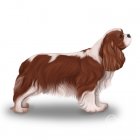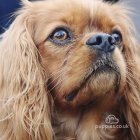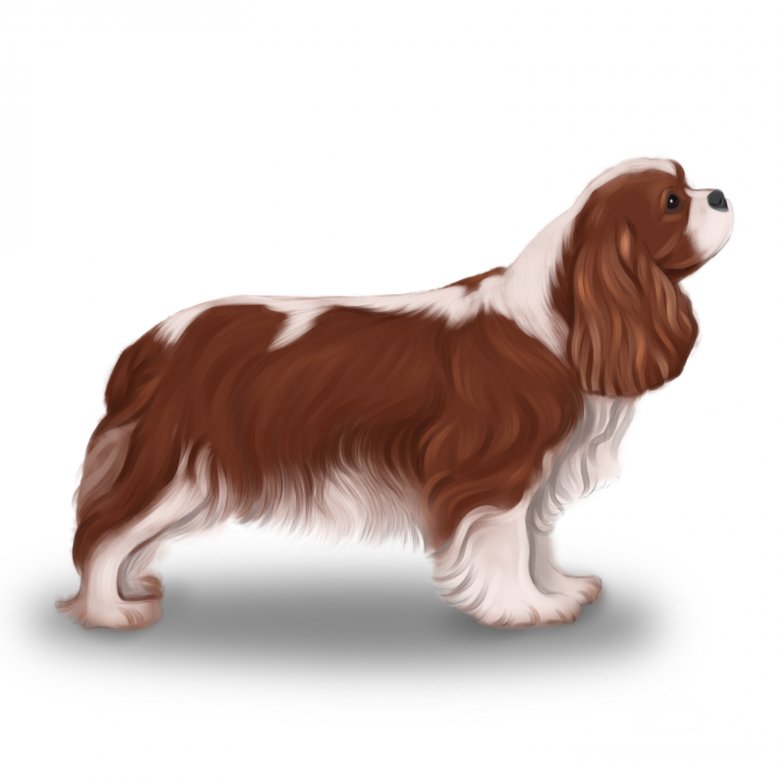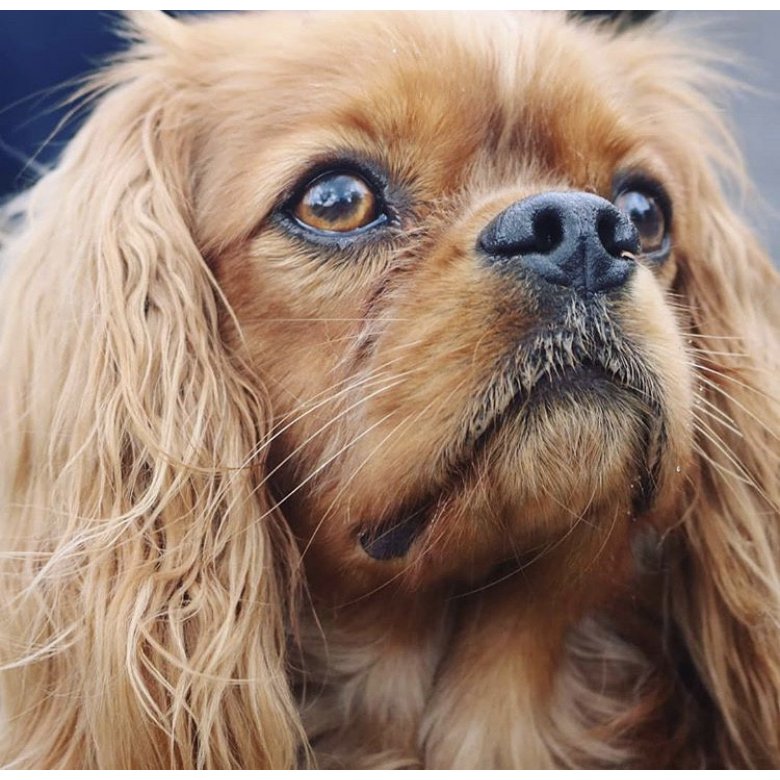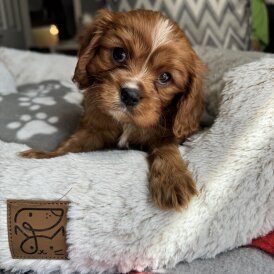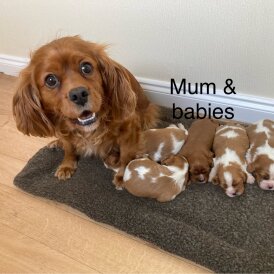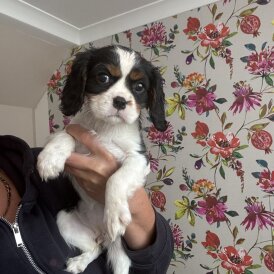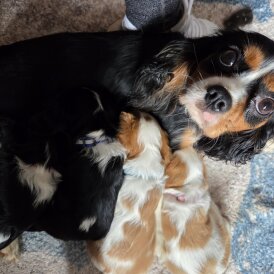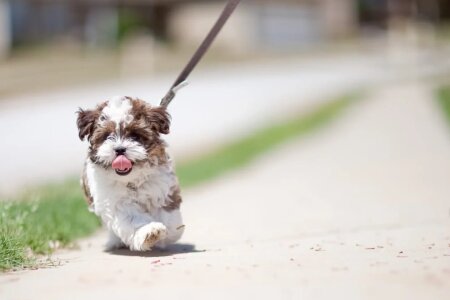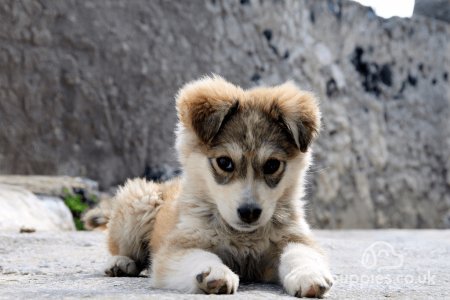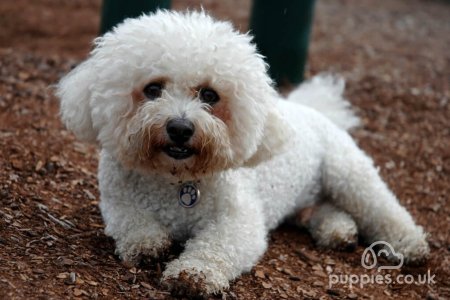Why Cavalier King Charles Spaniel puppies are great
Not to be mistaken for the King Charles Spaniel, Cavalier puppies are distinctive for a longer nose and jaw, and large, round eyes, giving them a uniquely cute look. Friendly, non-aggressive, and outgoing, the Cavalier King Charles Spaniel makes a great pet for a variety of homes. Originated from the toy spaniels seen in royal courts throughout history, they have been an English favorite for decades. Some highlights:
It doesn’t take more than the occasional bath and brush to keep their coats looking great
They enjoy sitting on the sofa all day, just as much as a walk, so can fit into a variety of home routines
As they are friendly and affectionate it makes them a perfect match for households with children and other animals
They’re eager to please, so you can easily train them
Things to consider when looking at Cavalier King Charles Spaniels for Sale
Like many dog breeds, there are certain things to be aware of before purchasing a Cavalier King Charles Spaniel puppy. Some downsides to the Cavalier King Charles Spaniel:
They enjoy companionship and therefore don’t suit being left alone all day
There are various health concerns to be aware of such as eye, ear and hip problems, but most Cavalier puppies live to old age
They can develop behavioural problems if they start to believe they rule the household, so be aware of Small Dog Syndrome
History of Cavalier King Charles Spaniels
Toy Spaniels were popular pets for royalty in the 16th, 17th, and 18th centuries, the name coming from King Charles II who always had two or three with him at any one time. For a period they dropped out of fashion, then as dog breeding was taken more seriously people continued the development of what it today known as a King Charles Spaniel. Whilst they are a popular breed, it was an American lover of toy spaniels that wanted to more closely replicate the classic form of royal dogs from the tudor period that had since been bred to have a smaller face. Breeders at the time were successful, but it wasn’t until 1945 that the Cavalier was finally awarded seperate registration and started to grow in popularity.
Appearance
Unlike the King Charles Spaniel, Cavalier dogs have a longer face with distinctive large eyes that are a hallmark of the breed. They are larger than other toy spaniels but with the same floppy ears, and graceful feathered coats. You can find Cavalier King Charles Spaniel puppies with white, tan, and black coats.
How big is the Cavalier King Charles Spaniel?
They stand at 30-33 cm tall.
How heavy is a Cavalier King Charles Spaniel?
Fully grown Cavalier King Charles Spaniels are generally between 4.5-8.2 kg.
What Colour is the Cavalier King Charles Spaniel?
Cavalier King Charles Spaniel puppies can be found with chestnut and white coats, a red colour known as ‘ruby’, the tri-colour black and white with tan markings, or the simple back and tan.
Temperament
Do Cavalier King Charles Spaniels make good guard dogs?
Unfortunately, Cavalier King Charles Spaniels are friendly so won’t be very good at warding off intruders, instead looking to make friends with new people they meet.
Do Cavalier King Charles Spaniels bark a lot?
Although many people associate barking with small dogs, the Cavalier King Charles Spaniel isn’t known to be an excessive barker. Good socialisation with people and other animals is key to this however, as isolated dogs can become nervous and bark more. Similarly, if the dog isn’t properly trained it can suffer from Small Dog Syndrome and therefore bark more, believing it is the leader of the pack.
Are Cavalier King Charles Spaniels easy to train?
As Cavalier King Charles Spaniels are people-pleasers you can expect to train them relatively easily. They are intelligent so quick to learn new things, making the process simple. Starting early is always key, as they are just as quick to pick up bad habits as they are good ones.
Are Cavalier King Charles Spaniel playful?
Cavalier King Charles Spaniels are usually known as being gentle and well-behaved around other animals and children, so perfect for playing and socialising. That being said, they love to chase small animals such as squirrels or butterflies, so should be kept on a leash when outside in case they run towards a road. Whilst they are puppies they can have bursts of playfulness, but do need to sleep lots to make up for lost energy, so you can see them nap up to 21 hours a day.
Are Cavalier King Charles Spaniels good with other pets?
Cavalier King Charles Spaniel puppies are known to have a peaceful temperament so work well in households with other animals. Socialisation is especially important so it can actually be beneficial for training and later behaviour.
Can I leave a Cavalier King Charles Spaniel Alone?
Separation anxiety is a problem with Cavalier King Charles Spaniel puppies. Both younger and older dogs need companionship, so aren’t suited to being left alone all day, or at a kennel. If they are left for more than a few hours they can get nervous and chew furniture or bark excessively.
Health
How long do Cavalier King Charles Spaniels live?
As long as they are healthy, you can expect your Cavalier King Charles Spaniel puppy to live anywhere from 9 to 14 years.
How much exercise does a Cavalier King Charles Spaniel need?
A Cavalier King Charles Spaniel puppy loves running around just as much as it loves sitting on a lap. A daily walk will suffice to keep them entertained and healthy, but they can partake in more despite their small size.
What are Cavalier King Charles Spaniel Common health issues?
Things to watch out for and to be careful of when purchasing a puppy are:
Syringomyelia
Hereditary eye diseases
Ear infections
Heart Conditions
Hip dysplasia
Care
What should I feed my Cavalier King Charles Spaniel?
High-quality dog food should be given to a Cavalier King Charles Spaniel puppy appropriate to its age and lifestyle. They can get fat easily, so be warned of giving them too many treats. One meal a day is usually enough for most.
How much grooming do Cavalier King Charles Spaniels need?
Brushing regularly keeps the long coat silky and smooth, whilst a bath keeps it in great condition. You should regularly clip the nails once a month, as overgrown claws can be painful or cause problems.
Do Cavalier King Charles Spaniels shed?
You can expect a Cavalier King Charles Spaniel to malt fully a couple of times a year. As well as this they are known to shed quite regularly, so if you’re not a fan of hoovering, keep this in mind.
Average costs
How much does it cost to keep a Cavalier King Charles Spaniel?
As a rough guide in pricing: Cost to buy: roughly £700-£1000 for a well-bred Cavalier King Charles Spaniel puppy Food, insurance, vet bills: £50-£100 per month
Specific Buying Guide
You can read our general buying guide here (/advice-on-buying-a-puppy/), with the most important thing being going to view your Cavalier King Charles Spaniel puppy, seeing it with its mother, and checking the quality of the breeder. More specifically, here is some Cavalier King Charles Spaniel puppy buying advice:
Going to a good breeder is important to make sure all relevant health checks have been made. Cavalier King Charles Spaniel puppies can be incorrectly labeled, so make sure you’re getting the right breed and not a King Charles Spaniel with health problems as the two breeds have serious differences.
Other reading, Adopting Cavalier King Charles Spaniel Puppies and Rescue Organisations
A big thank you to the following sources who helped to shape this article: https://www.pdsa.org.uk/taking-care-of-your-pet/looking-after-your-pet/puppies-dogs/small-dogs/cavalier-king-charles-spaniel https://thecavalierclub.co.uk/start.html https://www.akc.org/dog-breeds/cavalier-king-charles-spaniel/ https://www.thekennelclub.org.uk/services/public/breed/display.aspx?id=6149






